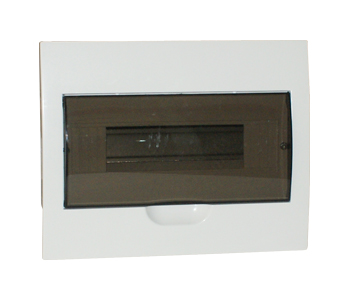AGM Electrical Supplies Sets a New Standard with their Advanced Circuit Breaker for Efficient Power Management

What is a Circuit Breaker?
Circuit breaker are electrical switches designed to protect energy-consuming appliances and equipment from short circuits that could result in fire, equipment damage, or electrocution. When overcurrent is being transmitted through than its intended capacity, a circuit breaker senses it and switches itself off in order to avoid further power flow - thus preventing fires, equipment destruction, and personal injuries due to electrocution.
This pattern provides a solution for an application to deal with anticipated temporary failures by transparently retrying an operation that had become unavailable previously. This pattern can be especially useful when operating on islanded edge grids such as energy storage systems and energy utilities.
Durability
Circuit breakers are electrical switches designed to protect electrical systems from damage by interrupting current during fault conditions or overload situations and cutting power off quickly, thus avoiding extensive damage to them and their connected appliances. They come in all shapes and sizes from miniature units used on home appliances to large switchgear serving utilities and industrial systems.
One of the primary causes for circuit breaker tripping in homes is overheating caused by too many electrical devices drawing too much electricity on one circuit. When too many devices draw too much power on a circuit at once, too much energy enters through its sensors, heating up enough that they switch off all flow of electricity by switching their switch-off position.
Circuit breakers can detect and prevent various electrical problems, including ground faults - when hot wires come in contact with metal framing members in walls or outdoors - as well as series arcing between wires that could quickly lead to fire. Some circuit breakers (GFCIs and AFCIs) can even detect and prevent series arcing between wires that could spark an inferno of fires if left unchecked.
Efficiency
Circuit breakers detect when an electricity line has become overloaded, stopping its flow to protect devices, people, or locations from damage such as damaged lines, fire, or electrocution. Resetting is easy - all it takes is one switch click to restore electricity flow again!
Circuit breakers use an internal mechanism that heats up when electrical current reaches unsafe levels and trips the circuit breaker, cutting off electricity to stop flowing along its pathway and shutting it off, similar to what fuses do.
These breakers may utilize either thermal or magnetic tripping mechanisms. Type C MCBs are most often seen in commercial and industrial settings, featuring long thermal delays and medium magnetic trip points to accommodate higher inrush currents produced by motors or fluorescent fixtures; their long thermal delay and medium magnetic trip point make them suitable for handling such inrush currents as created by motors or fluorescent fixtures; their arc chutes prevent damage while minimizing heat; they're highly energy efficient as they can cut energy consumption up to 90%!
Safety
A circuit breaker can quickly detect problems like overloading, short-circuiting and jumping lines and instantly stop their flow of electricity. Unlike fuses that must be replaced after each use, which must then be reset manually or automatically when they have turned off current flow; circuit breakers can be reset either manually or automatically once they have disconnected current flow.
An electrical circuit breaker's internal sensors are designed to detect when an electrical current in a circuit exceeds safe levels, protecting appliances from potential damage and fire hazards. Once detected, its switch will "trip", interrupting current flow - similar to how your blow dryer shuts off automatically when too much power has been consumed.
To ensure the electronic controls on a circuit breaker are performing their safety functions effectively, UL Solutions introduces intentional faults during testing to assess how solid-state components react. They must continue functioning normally under these conditions to be recognized as UL 489I devices; this may include validating semiconductor switching under automatic and nonautomatic operation as well as proper sequencing of isolating and bypass switches with single-point failure detection.
Easy to Install
AGM Electrical Supplies Circuit breakers are an invaluable safety device, limiting the amount of power flowing through your home's electrical wiring. When too much current tries to pass, too much heat builds up in the circuit and when too much current attempts to flow, too quickly, it heats up until eventually it trips and stops flow altogether - thus preventing overheating and potential fire hazards from occurring.
To install a new circuit breaker, first disconnect power to both your panel box and individual breaker by flicking off its switch. Use a screwdriver to loosen its terminal screw before using any metal jewelry as shielding when working with an energized circuit.
Before selecting a circuit breaker for your system, determine the voltage and amperage ratings. Select one that corresponds with this information plus adds 20% for the safety margin. After purchasing, ensure it will fit within your electrical panel's directory and has knockouts available for cable access. Afterward, install it onto a hot bus bar securely by sliding and screwing.
Best Selling Products
Reccent Posts
- AGM Electrical Supplies Sets a New Standard with their Advanced Circuit Breaker for Efficient Power Management
- Ensure Electrical Safety with Switchboard Accessories by AGM Electrical Safety
- All About Fluorescent Lighting by AGM Electrical Supplies
- Qualities of a Good Dimmable LED Downlight
- Clipsal Saturn Switches and Power Points











